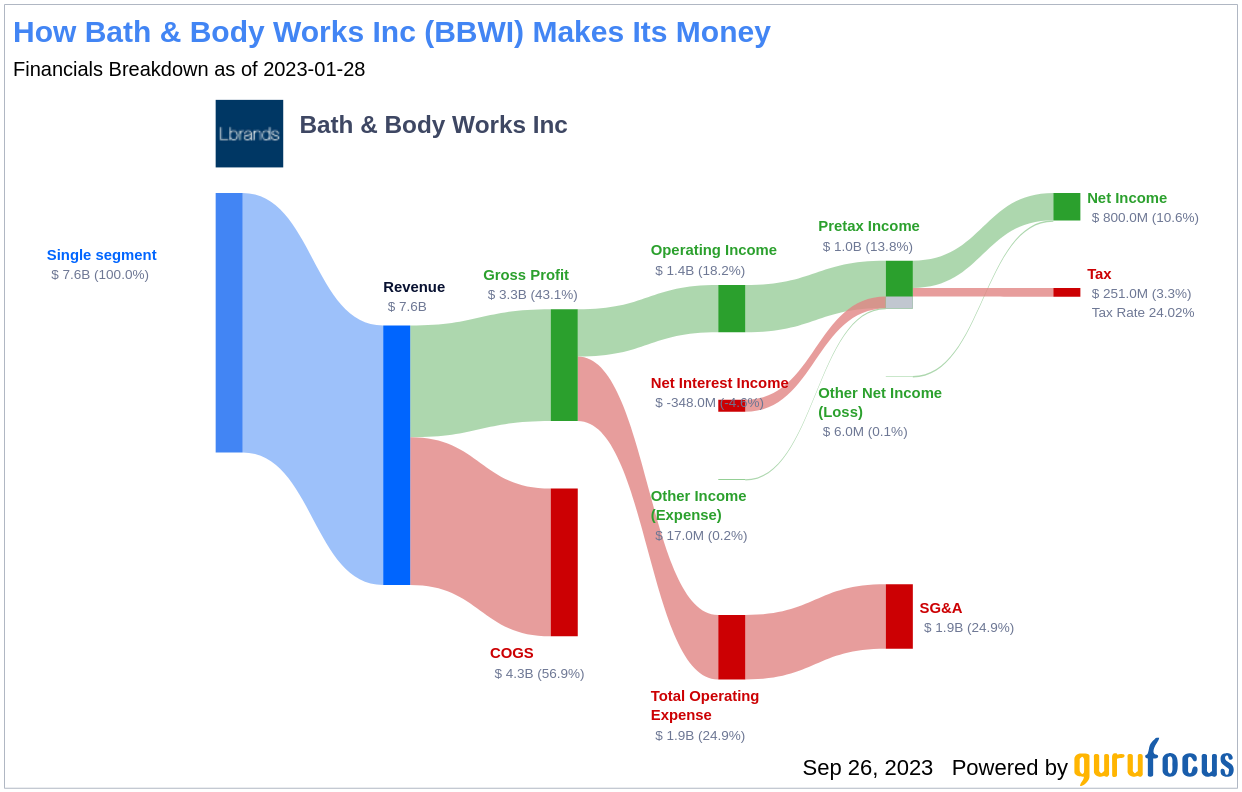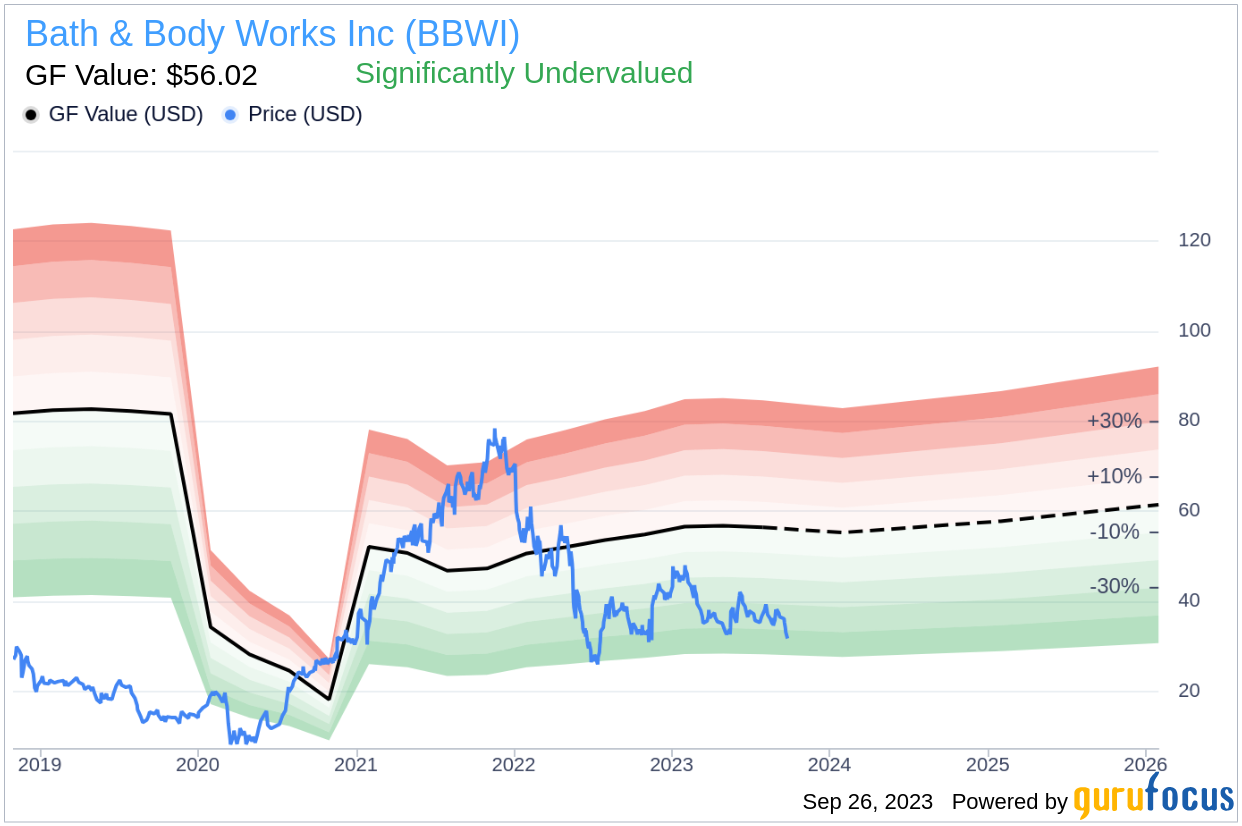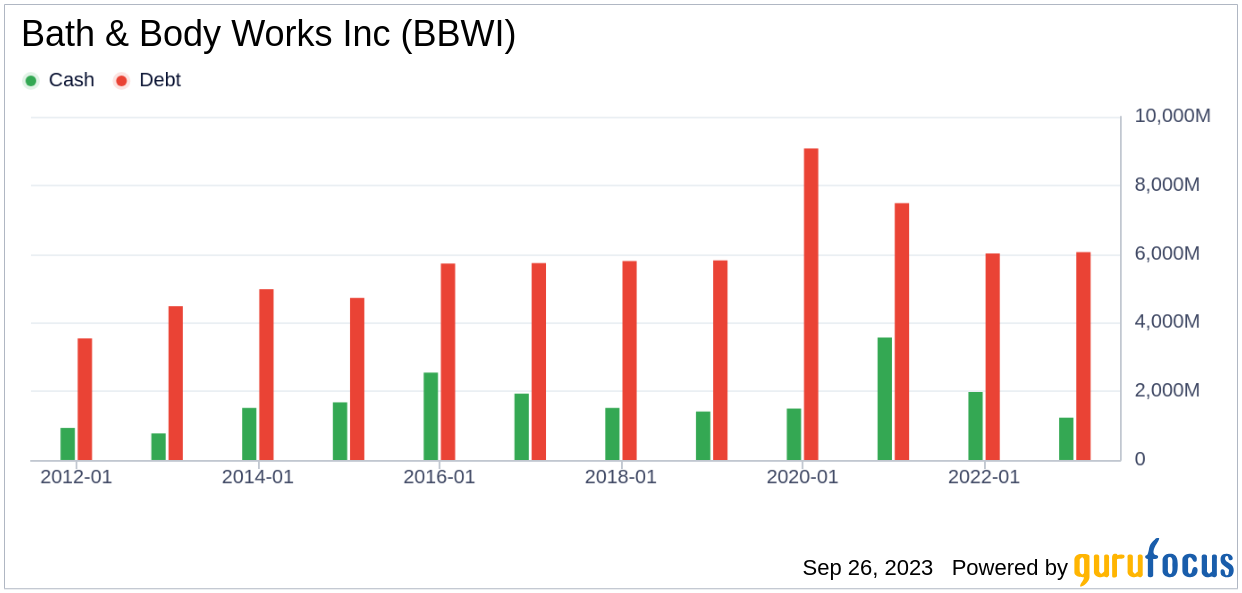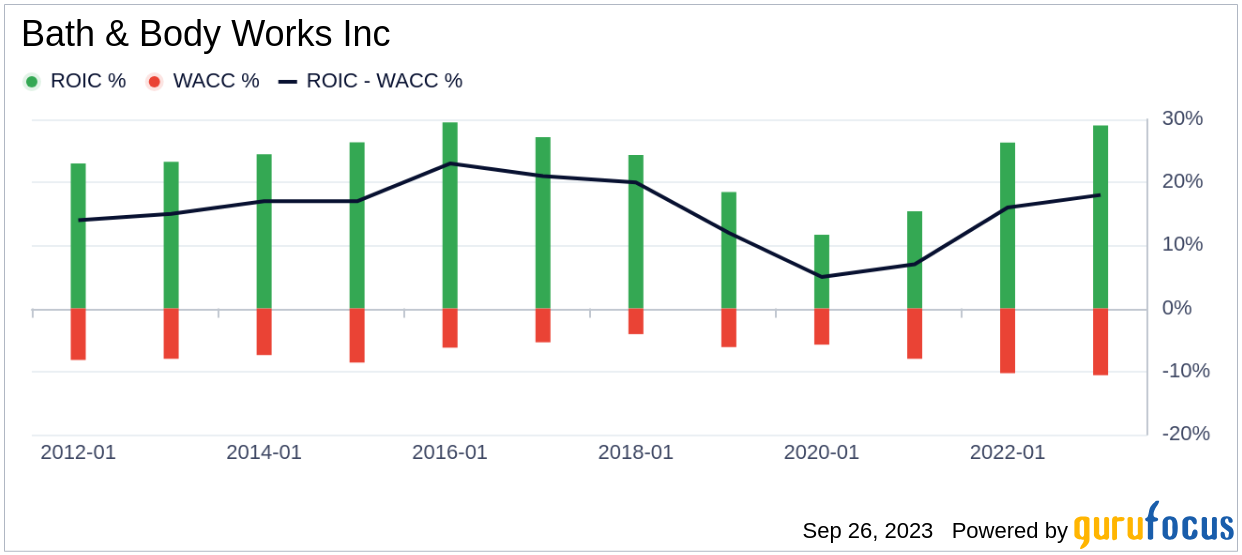Bath & Body Works Inc (BBWI, Financial) has recently experienced a daily loss of -4.14% and a 3-month loss of -12.42%. With an Earnings Per Share (EPS) (EPS) of 3.07, the question arises: is the stock significantly undervalued? This article offers an in-depth valuation analysis of BBWI, providing valuable insights for potential investors.
Company Overview
Bath & Body Works is a specialty retailer, primarily operating in North America, under the Bath & Body Works, C.O. Bigelow, and White Barn brands. The company, which derives less than 5% of its sales from international markets, made 72% of its sales from its brick-and-mortar network in fiscal 2022. The network comprises more than 1,800 retail stores. Future growth is anticipated from store reformatting, digital and international channels, and new category expansion.
The company's current stock price is $31.7, notably lower than its GF Value of $56.02. This discrepancy prompts a deeper analysis into the intrinsic value of Bath & Body Works.
Understanding the GF Value
The GF Value is a proprietary measure that estimates a stock's fair value. It is calculated based on historical trading multiples, a GuruFocus adjustment factor reflecting the company's past performance and growth, and future business performance estimates. This GF Value Line is considered the fair value at which the stock should ideally trade.
If the stock price significantly exceeds the GF Value Line, the stock is likely overvalued, and its future returns may be poor. Conversely, if the stock price is significantly below the GF Value Line, the stock may be undervalued, and its future returns are expected to be higher.
For Bath & Body Works, the current stock price of $31.7 per share is significantly below the GF Value, suggesting that the stock is significantly undervalued. As a result, the long-term return of its stock is likely to be much higher than its business growth.
Link: These companies may deliver higher future returns at reduced risk.
Financial Strength
Investing in companies with poor financial strength carries a higher risk of permanent capital loss. Therefore, it's crucial to carefully review a company's financial strength before deciding to buy its stock. A good starting point is looking at the cash-to-debt ratio and interest coverage. Bath & Body Works has a cash-to-debt ratio of 0.13, which is worse than 76.84% of companies in the Retail - Cyclical industry. GuruFocus ranks the overall financial strength of Bath & Body Works at 4 out of 10, indicating that its financial strength is weak.
Profitability and Growth
Investing in profitable companies, particularly those with consistent long-term profitability, poses less risk. A company with high profit margins is also generally a safer investment than one with low profit margins. Bath & Body Works has been profitable 9 out of the past 10 years. Over the past twelve months, the company had a revenue of $7.40 billion and an EPS of $3.07. Its operating margin is 16.42%, ranking better than 90.4% of companies in the Retail - Cyclical industry. Overall, GuruFocus ranks the profitability of Bath & Body Works at 8 out of 10, indicating strong profitability.
Growth is a crucial factor in a company's valuation. GuruFocus' research has found that growth is closely correlated with the long-term performance of a company's stock. If a company's business is growing, it usually creates value for its shareholders, especially if the growth is profitable. On the other hand, if a company's revenue and earnings are declining, the value of the company will decrease. Bath & Body Works's 3-year average revenue growth rate is better than 80.53% of companies in the Retail - Cyclical industry. However, its 3-year average EBITDA growth rate is 7.1%, which ranks worse than 51.67% of companies in the same industry.
ROIC vs WACC
One can also evaluate a company's profitability by comparing its return on invested capital (ROIC) to its weighted average cost of capital (WACC). Return on invested capital (ROIC) measures how well a company generates cash flow relative to the capital it has invested in its business. The weighted average cost of capital (WACC) is the rate that a company is expected to pay on average to all its security holders to finance its assets. If the ROIC exceeds the WACC, the company is likely creating value for its shareholders. During the past 12 months, Bath & Body Works's ROIC was 26.04 while its WACC came in at 9.16.
Conclusion
Overall, Bath & Body Works Inc (BBWI, Financial) stock appears to be significantly undervalued. The company's financial condition is poor, but its profitability is strong. Its growth ranks worse than 51.67% of 896 companies in the Retail - Cyclical industry. To learn more about Bath & Body Works stock, you can check out its 30-Year Financials here.
To find out the high quality companies that may deliver above-average returns, please check out GuruFocus High Quality Low Capex Screener.




